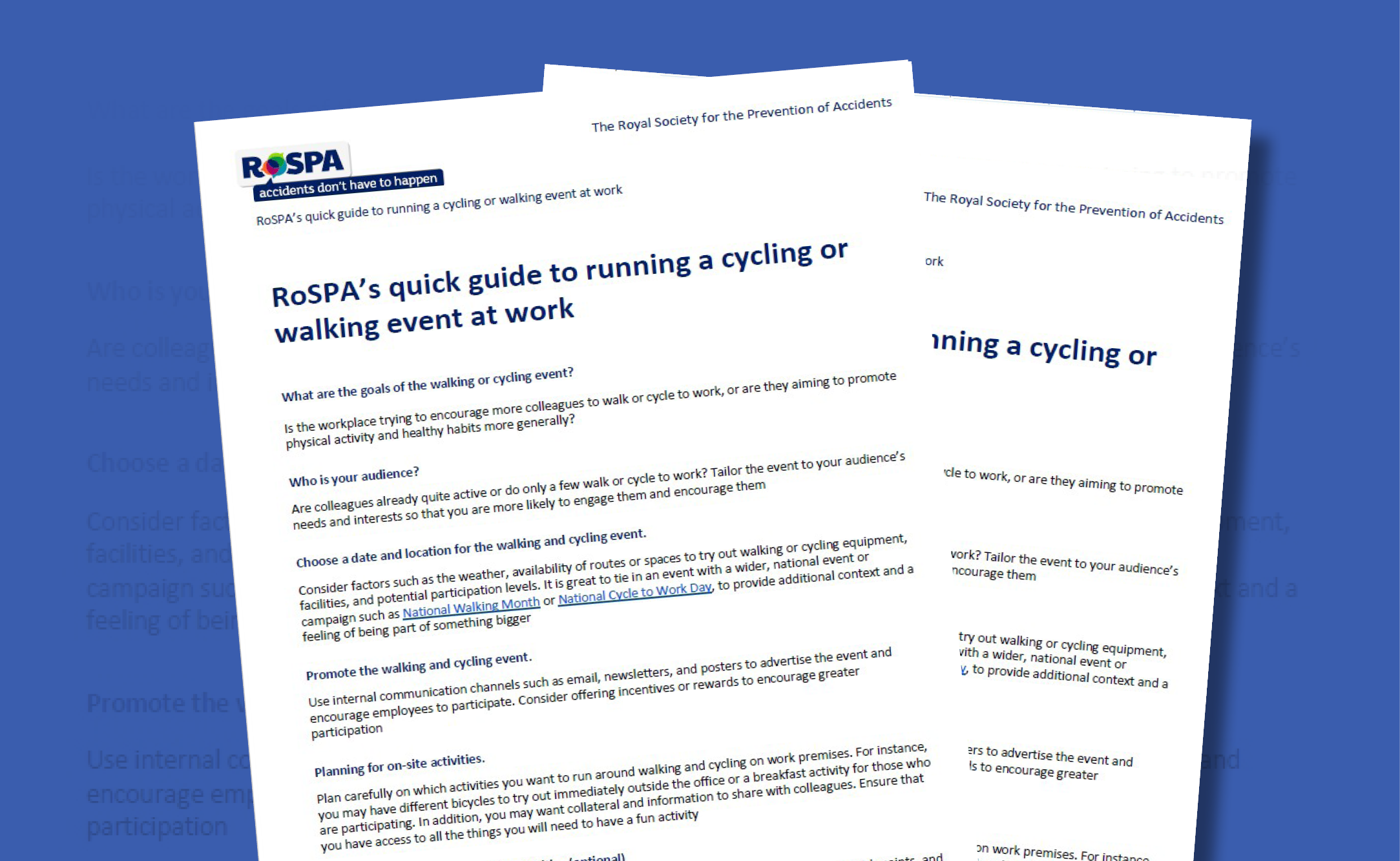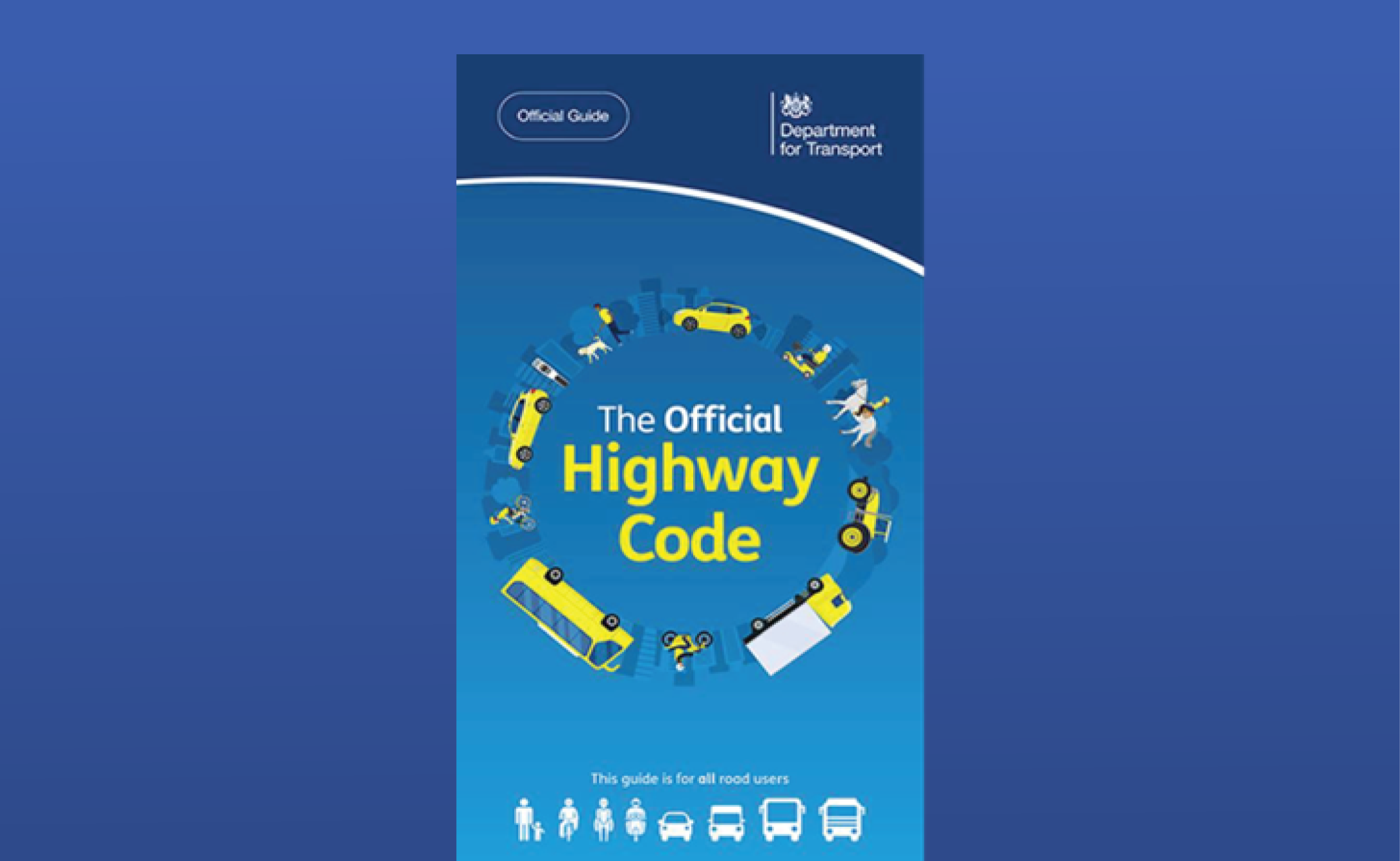
Employers
Employers can play a vital role in promoting safe walking and cycling to work. This section outlines workplaces' responsibilities around employees walking and cycling, and opportunities for workplaces to get more employees cycling and walking, through amenities, promotion, policies and 'Cycle to Work' schemes. It also contains information demonstrating the benefit of increased walking and cycling, not just for employees but also for the employer. The more employees that walk and cycle, the more productive and happy employees and workplaces will be.
How do I support walking and cycling to and from work?
Do I have a duty of care for employees who, walk and cycle to work?
Employers are legally responsible for employee wellbeing while working. Their responsibilities include business travel for meetings and events on foot or by bike as part of their 'duty of care', as set out in the Health and Safety at Work Act (1974) and under common law. Employers must mitigate any risks and take their responsibilities seriously by safeguarding employees while on work trips that are walked and cycled.
Under normal circumstances, the commute does not form part of this duty of care, except for commuting to a work location that is not the primary working location (e.g. a work office) or where a work site is deemed dangerous by the employee. In these cases, an employer should undertake a travel risk assessment to understand and mitigate the risks of that walking or cycling journey. An example cycle risk assessment form created by The Scottish Occupational Road Safety Alliance (ScORSA), which can provide a basis for risk mitigation, can be accessed on the ScORSA website.

How do I encourage employees to cycle and walk to work?
Even though the commute to work is not the responsibility of the workplace, it’s still important to promote walking and cycling, as there are a number of benefits for workers and the workplace. If staff incorporate more exercise into their daily routine, with the commute being the obvious option, this can lead to a happier, more productive workforce and reduced absenteeism and increased wellbeing. As an employer, you can encourage walking and cycling in a number of ways, for instance through providing spaces and amenities, having policies in place that support cycling and walking to work, and organising promotion and events where employees can be encouraged to walk or cycle.
Why is walking and cycling good for the workplace and productivity?
The benefits to individuals who walk and cycle are well known. These include a reduction in early death or illness and memory improvements, as well as being fit and healthier. But why is walking and cycling good for the workplace? A number of studies and pieces of research have highlighted why it is beneficial to productivity. Findings include:
For information on the facts and figures for employees and the benefits of walking and cycling to work, please visit the Facts and figures about walking and cycling to work section of the Hub.
What are the facilities that walkers and cyclists need at work?
On-site changes can make a massive difference to cyclists and walkers, meaning that cyclists can secure their bikes, and both cyclists and walkers can store clothes and have a shower to freshen up. The following on-site amenities are suggested to make it easier to cycle or walk to work:
Showers
Many employees and employers say that they don’t want to cycle to work as they feel that they will be sweaty and dishevelled when arriving at work or when attending external meetings. Having a shower can mean that the employee is able to get exercise in before their working day begins and can then freshen up and be ready for their day.
Bike storage
Having secure and weather-proof cycle storage, preferably inside the work premises, can provide employees with peace of mind around leaving their bike out of their sight while at work. Many workplaces have dedicated bike storage, either in or outside, but within their premises. There are many different kinds of bike storage that can be installed. For further information, please take a look at Cycling UK’s information on cycle parking.
Drying room
A drying room will mean employees are able to leave clothes to dry after cycling or walking to work. This is especially important when it’s been raining, as clothes will have a chance to dry out by the end of the working day.
Lockers
Lockers at work will provide somewhere for walkers and cyclists to securely store walking equipment (e.g. shoes) or cycling equipment (e.g. helmets), as well as a set of clean clothes to change into after walking or cycling into work.
Pool bikes
Having a set of bikes that employees can use during the work day can work well for local meetings, where walking may not be an option. Pool bikes can also be borrowed by those wanting to try cycling to and from work.
What policies should workplaces have in place to support walking and cycling?
Having an active travel (walking or cycling) policy will show employees and others, including customers, that you take the needs of walkers and cyclists seriously and that they are a part of the organisation’s mission and vision. Policies can include:
-
Encouraging walking and cycling for part or complete journeys to external meetings
-
Rewarding those who walk or cycle with expenses around work travel (remuneration around walked or cycled journeys)
-
Promoting walking meetings outside of the office
-
Offering a cycle salary sacrifice plan for employees (e.g. Cycle to Work scheme). Further information on the different cycle to works schemes available can be found later on this page
-
Having a dedicated workplace travel plan, setting out how the workplace supports walking and cycling. To create a workplace travel plan visit Modeshift, who provide support to businesses to create their own travel plan, or speak to your local authority’s Active Travel or Transport teams.
What walking and cycling events can my workplace run or participate in?
Promotional events and activities that employees (and customers) can get involved in around walking and cycling show that your workplace is engaged with active travel, as well as encouraging employees to start walking and cycling to work more regularly. There are a number of events that workplaces can get involved in that operate nationally.
In addition, workplaces can run their own promotional events at any time in the year. These could include bike maintenance sessions, free breakfasts for cyclists (one-off or regular events) or a general promotional event encouraging walking or cycling, offering bikes to try out, advising staff about facilities and amenities, promoting the benefits of walking and cycling, or free prizes and offers to support walking and cycling.
We have created a ‘Quick Guide to running a walking and cycling event at work’, which provides further information on running your own event at work.

How to run a walking and cycling event factsheet
How do I run a cycling group at work?
A Bicycle User Group is a work-based support network for cyclists, which can encourage employees who don’t already cycle to do so. Creating a Bicycle User Group (BUG) will provide another way to encourage new cyclists to get on their bikes for their commute or for work meetings. A BUG will usually be run by an employee champion who will support others to try cycling and may conduct events to promote cycling. For further information, please visit Cycling UK’s information on setting up a bicycle group at work.
What is the Cycle to Work scheme?
The Cycle to Work scheme is a free salary sacrifice scheme, where employers register as a workplace, employees choose a bike and/or bike accessories and the employer pays out for the bike/accessories, with the employee paying back the employer over an agreed timeframe. The employer and the employee both save money on tax and the cost of the bike/accessories, respectively.
How do the Cycle to Work schemes work?
Once a workplace is registered, the employee registers and chooses a bike within the budget limit set by their workplace. The bike is then purchased, given to the employee, and the employee pays back the employer in instalments, which are deducted from their monthly wages. The benefit to the employee is that they can save money (up to a third of the outlay cost) and can pay for the bike over a period of time. The schedule for repayment will be set by the employer and is usually between one and two years in duration.
Do employees pay tax on Cycle to Work schemes?
Employees can get a bike as a company-approved benefit, which means a reduction in the amount of tax paid through National Insurance and income tax by the employee. Any VAT paid as part of the Cycle to Work scheme can be claimed back by the employer, and there is also a saving through National Insurance to the employer.
Does a Cycle to Work scheme bike have to be returned if not paid off in full?
The workplace technically owns any bike purchased through a cycle to work scheme until it is paid off by the employee. If an employee leaves a workplace before finishing paying off the bike, the workplace will tend to take a final amount from the final payroll, so that they are not out of pocket, and the bike will then become the property of the ex-employee.
What are the different Cycle to Work schemes for workplaces?
There are several organisations who provide cycle to work schemes for employers. Many employee benefit organisations now offer cycle to work schemes, which employers can use. They all operate in a similar way, however we do not make any recommendations about which scheme to use for your own organisation. Current schemes include:
Facts, figures, tips and recommendations to encourage safe walking and cycling to work
There are a large number of facts and figures that can be used to promote and support walking and cycling to work. Some of the benefits of walking and cycling to work can be found below:
What are the benefits of walking and cycling to work?
Walking to work
-
Walking strengthens the joints, muscles and bones and supports the heart and lungs, mental health and wellbeing, as well as improving blood pressure, diabetes and lower back pain1
-
A 10-minute brisk walk can increase physical fitness, reduce weight and reduce risk of early death by 15 per cent2, while a 30-minute brisk walk can improve memory, reasoning, the ability to plan and reduces the time it takes to complete tasks3
-
A 30-minute walk can burn 350 calories per day4, equivalent to 1.5 Mars bars.
-
Walking reduces the risk of contracting Alzheimer’s disease by 29 per cent, cognitive decline by 26 per cent5, and developing depression by 17 per cent 6.
Cycling to work
-
Cycling boosts the immune system7, reducing stress and supporting good mental health8. It also reduces cholesterol and the chance of developing diabetes9, colon cancer10, and heart disease11
-
Cycling improves cardiovascular fitness, supports joints12 and maintains muscle mass
-
Cycling is three-times faster than walking, for the same amount of energy expended
-
Employees who cycle have 1.3 fewer days of absence13 per year than those who don’t cycle
-
Commuting by bike for one hour every workday will meet the recommended amount of physical activity14 each week and burns between 700 and 900 calories15, the equivalent of two Cornish pasties.
Top six tips for safe walking and cycling to work
The following are suggestions of what can be done to support safe walking and cycling to work:
-
Have amenities and facilities that encourage walking or cycling to work,such as showers and secure storage. For further information on this, visit the 'How do I support those walking and cycling to and from work' section of the Hub
-
Have supportive policies in place that make it easy for employees to walk and cycle to and from work and during the day. For further information on this, visit the the 'How do I support those walking and cycling to and from work' section of the Hub
-
Run promotional events and take part in national events that support walking and cycling. Please see our ‘How to run a walking and cycling event at work’ guide for further information
-
Encourage staff to be safe on walking and cycling trips to and from and during the work day and remind them that they are representing their workplace, even on their commute. Providing basic information, such as the Highway Code, will remind employees what they need to do when walking and cycling, as many adults can pick up bad habits and may not realise that their behaviour could endanger them and others. You can purchase a copy of the Highway Code by clicking on the purchase link.
-
Review any policies or documentation around walking and cycling on an annual basis to ensure that this is up-to-date and takes into account any changes in travel trends. For instance, if there are more e-bikes and adult kick-scooters being used on journeys then these would need to be factored in to policies
-
Encourage staff who are cycling to wear helmets and any protective gear that will help them to be safer. This should include wearing hi-visibility or fluorescent clothing when walking or cycling in low light conditions (for instance early mornings or late afternoons in autumn and winter).

Highway code
Keep safe, make sure you’re up to date with the latest rules of the road, and avoid penalties and fines by getting your copy of The Official DVSA Highway Code
References
- 1 Walking: Trim your waistline, improve your health
- 2 10 minutes brisk walking, PHE
- 3 The acute effects of aerobic exercise, Journal of Clinical and Diagnostic research
- 4 Calories burned in 30 minutes, Harvard University
- 5 Impact of physical activity on cognitive decline, Biomed Research International
- 6 Physical Activity and Incident Depression, American Journal of Psychiatry
- 7 Exercise and Immunity, Medline Plus
- 8 Cycling and the mental health benefits, Cyclescheme.uk
- 9 Regular sprints boost metabolism, BMC Endocrine Disorders
- 10 Preventing colon cancer: exercise, Stop Colon Cancer Now
- 11 Association between active commuting and incident cardiovascular disease, British Medical Journal
- 12 What’s better for you: running or cycling? cyclescheme.co.uk
- 13 The association between commuter cycling and sickness absence, Preventive Medicine
- 14 Physical activity guidelines, NHS
- 15 Calories burned in 30 minutes, Harvard University